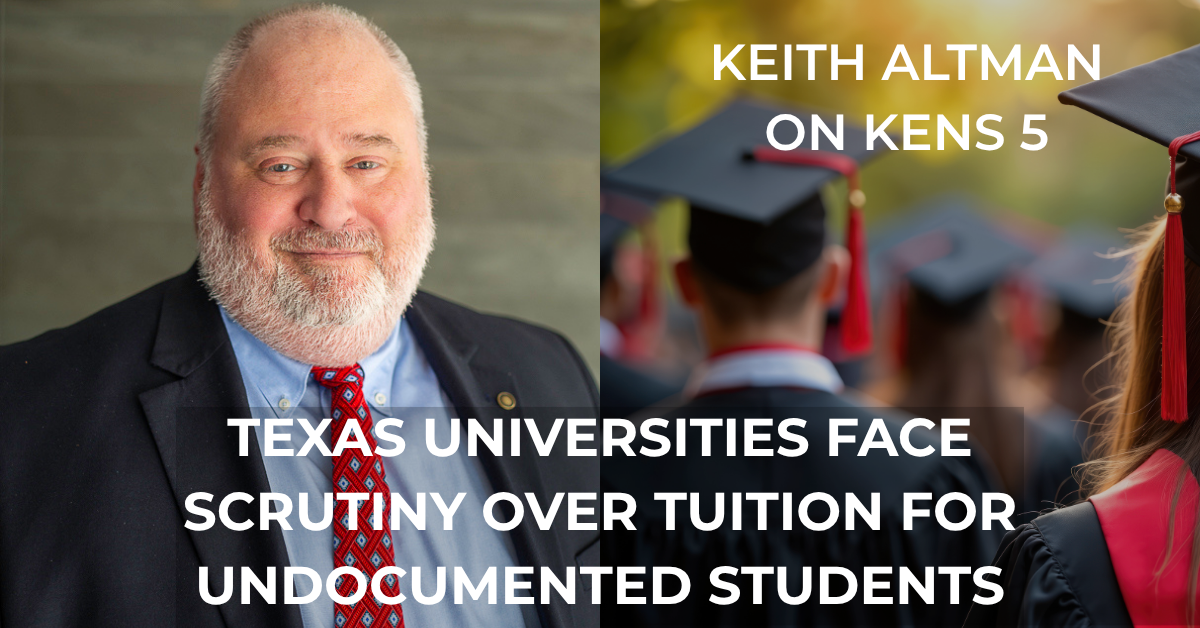Introduction: The Reinstatement of the 2020 Title IX Rule
In January 2025, President Trump signed an executive order that reinstated the Title IX regulations first introduced under his administration in 2020. This move followed a federal court decision that vacated the Biden administration’s 2024 Title IX rule, calling it “arbitrary and capricious” and beyond the scope of the Department of Education’s authority. The new order, titled Defending Women from Gender Ideology Extremism and Restoring Biological Truth, has significantly altered the way educational institutions handle complaints of sexual harassment and discrimination. It narrows the definition of “sex” under federal law to strictly biological terms and revives adversarial grievance procedures that closely resemble courtroom trials.
This reinstatement marks a sharp reversal of the Biden-era protections, which had sought to expand support for survivors, including LGBTQ+ students, and lower procedural barriers to reporting misconduct. Under the Biden rule, survivors could access supportive measures such as counseling, schedule changes, and housing accommodations even without filing a formal complaint. The Trump administration framed these reforms as unfair to the accused, claiming they compromised due process and fostered a “guilty until proven innocent” mentality. By reinstating the 2020 rule, Trump officials argued they were restoring constitutional protections for accused students.
Advocacy groups like the National Women’s Law Center and EdTrust condemned the decision immediately, warning that it prioritizes institutional liability over student safety and creates a chilling effect on reporting. They argued that the new approach retraumatizes survivors by forcing them into live hearings and cross-examinations, while leaving marginalized students even more vulnerable. This debate has reignited long-standing tensions over how Title IX should balance the rights of survivors and the accused, and whether civil rights protections should include gender identity and intersectional inequities.
Core Components of the Reinstated Title IX Rule
The 2025 reinstatement mirrors the 2020 Trump-era Title IX regulation. At its core is a requirement that schools conduct live hearings for all formal complaints of sexual misconduct. During these hearings, each party can have an advisor who directly cross-examines the other side. Survivors are therefore required to respond to aggressive questioning, which many describe as retraumatizing and hostile. Institutions must also issue written determinations of responsibility, adopting a highly legalistic model for proceedings.
The definition of sexual harassment has been significantly narrowed. Under the reinstated rule, harassment must be “severe, pervasive, and objectively offensive” to constitute a violation of Title IX. This contrasts with the broader Obama-era definition, which recognized any “unwelcome conduct of a sexual nature.” Many forms of misconduct that create a hostile educational environment but do not meet this stringent threshold now fall outside the scope of institutional responsibility.
Equally significant is the limitation of jurisdiction. Schools are no longer obligated to investigate misconduct that occurs off-campus or outside official school programs. For university students, whose social lives often extend beyond the physical campus, this means that incidents at off-campus housing, bars, or private events can be dismissed even if they affect a student’s ability to participate in education. Institutions also have broader grounds for dismissing complaints altogether if the survivor withdraws from the process or if the accused leaves the institution, leaving many cases unresolved.
Supportive measures, which previously could be offered regardless of whether a formal complaint was filed, are now tied to active grievance procedures. Survivors who do not wish to proceed through the adversarial system may be left without immediate accommodations. This creates additional disincentives to reporting and forces survivors to weigh their need for support against the risk of retraumatization during the grievance process.
Case Study: The Retraumatization of Survivors
Maria, a student at a Midwestern university, illustrates the impact of the reinstated Title IX rule. After reporting a sexual assault, she was required to attend a live hearing in which the accused student’s advisor cross-examined her on deeply personal aspects of her life. Many of the questions had little to do with the actual incident but instead focused on her credibility and sexual history. Maria later described the hearing as feeling like “an attack rather than an investigation.” She left the process emotionally drained, and although the case concluded with no finding of responsibility, she ultimately transferred to another institution. Maria’s experience is not unique; survivor advocates warn that the adversarial process deters many from reporting and can cause long-term psychological harm.
Impacts on Survivors and Campus Climate
The reinstatement has already produced measurable changes in campus climate. Early surveys conducted in spring 2025 revealed a decline in sexual misconduct reporting rates across several major universities. Survivors expressed less trust in institutional processes, fearing that the grievance system would be hostile, drawn-out, and ultimately futile. Many said they no longer felt safe seeking help.
Marginalized students face even greater barriers under the reinstated rules. Black, Latina, and Native students already contend with systemic bias and distrust within educational and legal systems. Studies show that Black women are less likely to be believed when they report sexual violence, while Latina students often face language and cultural barriers in navigating institutional processes. Native women, who experience some of the highest rates of sexual violence in the country, face additional jurisdictional complications between tribal and state authorities. By imposing heightened procedural requirements, the Trump-era Title IX policies exacerbate these inequities and further disadvantage survivors from marginalized backgrounds.
Gender Politics and the Exclusion of Transgender Students
The Trump administration has defended the rollback by claiming it protects women’s rights and safeguards “women’s spaces.” However, by narrowly defining “sex” as a purely biological category, the rule excludes transgender and non-binary students from Title IX protections. This exclusion legitimizes discriminatory practices, such as denying trans students access to bathrooms, locker rooms, athletic teams, and programs that align with their gender identity. For survivors who are transgender or non-binary, the consequences are even more severe, as they are stripped of federal protections in both reporting misconduct and accessing support.
Critics argue that the administration’s selective concern for women’s safety does not align with its broader policy record. The same administration has restricted abortion access, rolled back reproductive rights, and ignored systemic gender inequities in areas such as maternal health and wage disparities. The invocation of “women’s safety” thus appears more like a political tool than a genuine effort to improve conditions for women and girls in education. Intersectional realities are also ignored. Black, Latina, and Native girls face compounded forms of discrimination, yet the narrow biological definition of sex fails to account for these overlapping inequities.
Racialized Discipline and Systemic Inequities
The rollback also weakens Title IX’s ability to address racialized school discipline. Black girls are suspended and expelled at disproportionately higher rates than white girls for the same behaviors, Latina students are more likely to be arrested in school, and Native girls face the highest expulsion and law enforcement referral rates. These disciplinary patterns fuel the school-to-prison pipeline, undermining educational opportunities for girls of color. Without robust federal oversight, schools are free to maintain biased disciplinary practices without consequence. By stripping away inclusive Title IX enforcement, the reinstated rule allows these systemic inequities to persist unchecked.
Legal and Institutional Consequences
The legal landscape surrounding Title IX is now deeply unstable and increasingly fragmented. The reinstated definition of sex under the Trump administration’s 2025 order has triggered a wave of federal and state-level lawsuits. Civil rights organizations, LGBTQ+ advocacy groups, and disability rights coalitions have jointly filed challenges, arguing that this narrow biological definition directly conflicts with the Supreme Court’s 2020 decision in Bostock v. Clayton County. That landmark case recognized discrimination based on gender identity and sexual orientation as a form of sex discrimination under federal law. These new cases are moving through appellate courts and are expected to result in another Supreme Court showdown over the scope of Title IX.
Beyond the courtroom, the practical impact on universities and K-12 schools is profound. Institutions are now caught between competing directives from state governments and the federal administration. States such as California, New York, and Illinois have enacted their own expansive civil rights protections for LGBTQ+ and transgender students, which contradict the federal rollback. In contrast, conservative states such as Texas and Florida have aligned with the narrower federal standard. This has created a patchwork of obligations that leave schools unsure which legal framework they must follow.
Elite universities like Duke, Stanford, and Harvard have stated publicly that the rollback will have minimal operational impact because they already maintain grievance procedures, climate surveys, and prevention programs that exceed federal mandates. For example, Duke University reaffirmed its commitment to gender-inclusive policies, ensuring that students who identify as transgender or nonbinary remain protected under campus policy even without federal support. Harvard has similarly indicated that it will not revise its expanded Title IX reporting procedures, citing institutional responsibility rather than federal compliance.
However, the situation is very different for smaller private colleges and rural public institutions. Many of these schools lack the financial and administrative capacity to maintain dual systems of protection. Without clear federal guidance, they are forced to either scale back protections to align with the narrower definition of sex or risk legal challenges from conservative advocacy groups for going beyond federal law. In some cases, underfunded institutions have frozen Title IX investigations entirely, citing fear of liability while waiting for further court rulings. This creates a two-tiered system in which students at well-funded universities continue to enjoy robust protections, while those at under-resourced institutions remain vulnerable to harassment and discrimination with limited recourse.
Legal scholars warn that this constant regulatory whiplash has eroded the foundation of Title IX as a stable civil rights safeguard. Universities now view compliance as a moving target rather than a settled standard. To minimize liability, many schools are adopting the strictest and most defensive interpretation of the law. Ironically, this approach restricts survivors’ access to justice. Schools have reinstated live cross-examinations, raised evidentiary standards for sexual misconduct cases, and narrowed the definition of actionable harassment in order to remain within federal guidelines. As a result, survivors face higher procedural barriers to have their cases heard, often reliving trauma in more adversarial settings.
The uncertainty also has a chilling effect on reporting. Students are less likely to come forward when they perceive that institutional protections are unstable or politically dependent. Faculty and staff Title IX coordinators, who were already overworked, are leaving their positions in frustration, citing unclear directives and fear of personal liability. Meanwhile, insurance companies that cover universities’ legal risks are raising premiums in anticipation of heightened litigation, which further strains already limited budgets.
In the long term, this legal limbo risks reshaping the educational landscape. Wealthier and urban institutions will become islands of progressive protection, attracting students who seek inclusive environments. Underfunded rural schools may quietly roll back protections, reinforcing regional inequities. The rollback also sets a dangerous precedent for future administrations to use Title IX as a partisan tool rather than a neutral civil rights statute. Ultimately, this undermines public confidence in the federal government’s ability to provide a stable baseline of civil rights protections and threatens the broader principle of equal access to education.
The rollback of Title IX is closely tied to the broader erosion of reproductive rights in post-Roe America. Since the Dobbs decision overturned Roe v. Wade, more than twenty states have heavily restricted abortion, with some offering no exceptions for rape or incest. These bans have severe educational consequences. Survivors of sexual violence who cannot access reproductive healthcare are often forced to drop out, face economic hardship, or experience long-term academic disruption.
Students in conservative or rural states are hit hardest. Many must travel long distances or across state lines to seek care, which requires money, time, and exposes them to legal risks. Those without resources often have no options, leading to forced pregnancies and withdrawal from education. Even when Title IX technically protects pregnant students, the lack of healthcare access renders those protections ineffective in practice.
This deepens inequality. Wealthier students at elite universities in progressive states retain access to both reproductive care and robust Title IX policies. In contrast, students at underfunded institutions in restrictive states are left vulnerable. Legal and public health experts warn this could reverse decades of progress in women’s educational attainment, driving higher
Culture Wars versus Genuine Accountability
The Title IX debate has been pulled into the broader culture wars. The Trump administration has framed the rollback as a defense of free speech and due process, dismissing survivor-centered policies as products of “cancel culture” and “radical gender ideology.” This narrative distracts from the structural problems that actually fuel campus sexual violence, such as inadequate mental health resources, lack of evidence-based prevention programs, and underfunded student support systems. By turning Title IX into an ideological battleground, the administration avoids investing in the reforms that would genuinely improve campus safety and equity.
Resistance and Advocacy
Despite the rollback, students, educators, and advocacy groups are mobilizing in resistance. Organizations such as EdTrust, the National Women’s Law Center, and the Victim Rights Law Center have launched campaigns to educate communities about their rights and to push for more inclusive policies at the state level. Student groups have organized protests, sit-ins, and social media campaigns demanding that their universities uphold survivor-centered practices regardless of federal guidelines. Some states are now exploring their own legislation to codify broader Title IX protections and ensure they cannot be easily dismantled by future executive actions.
Policy Recommendations and Future Directions
Restoring equity requires more than simply reversing Trump-era policies. Experts argue that Title IX must be reformed to explicitly include survivors of all genders and to protect students regardless of sexual orientation or gender identity. Intersectional disparities must be addressed, particularly for survivors of color who face compounded barriers. Schools must be required to create trauma-informed, survivor-centered environments that do not rely on adversarial hearings to ensure accountability. Reproductive rights must also be recognized as essential to educational equity, since students cannot fully participate in education without access to comprehensive healthcare. Moreover, policies should reject narrow biological definitions of sex that exclude vulnerable students and undermine equal access to education.
Conclusion: The Stakes for Education and Civil Rights
The 2025 reinstatement of the Trump-era Title IX rule reveals how fragile civil rights protections can be when they depend solely on executive action. By narrowing the definition of sex, reinstating adversarial grievance processes, and tying support measures to formal complaints, the rollback harms survivors, excludes LGBTQ+ students, and deepens systemic inequities in education. The long-term consequences will fall hardest on marginalized communities and students at under-resourced institutions.
Protecting Title IX as a robust civil rights safeguard is now more urgent than ever. It will require sustained legal challenges, legislative codification, and grassroots advocacy to ensure that every student regardless of gender, race, or identity can access a safe and equitable learning environment. Only through sustained civic engagement and survivor-centered policymaking can Title IX fulfill its original promise of guaranteeing equal educational opportunity.




